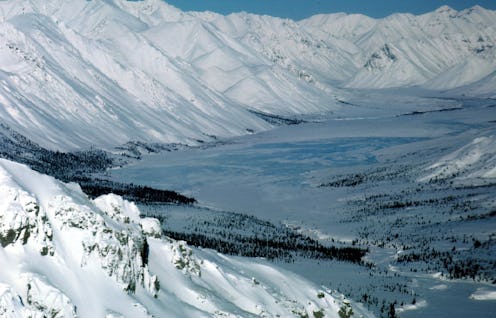News
Where Obama Failed In Protecting The Environment
A large portion spanning some 12 million acres of the Arctic National Wildlife Refuge is set to be protected by President Obama. What's not being protected are 14 areas that the president proposes be opened up for offshore drilling, including a wide expanse 50 miles off the Atlantic coast; three major areas in Alaska, including one location each in the Cook Inlet, Chukchi Sea, and Beaufort Sea; and 10 locations in the Gulf of Mexico. These areas are all included in the Interior Department's five-year leasing plan meant to perpetuate a U.S. oil boom, though onshore efforts have led to a major oil spill in Montana.
Alaskan officials see Obama's efforts as simply too restrictive because that's about 12 million acres that can't be explored for oil. Gov. Bill Walker pleaded with the president, stating that Alaska is in "the worst financial condition in the history of [the] state. This is not the time to be doing this." Despite the plan's goal to protect the fragile ecosystems of the 49th state, it appears that little is being considered in regards to plans to drill in the Atlantic, just 50 miles away from the coast. The Deepwater Horizon oil spill, the biggest in U.S. history, occurred a full 41 miles away from the coast. Adding nine extra miles as a preventative measure surely couldn't be enough to protect the Atlantic, could it?
The plan to drill in the Atlantic affects more than the five states closest to the potential leasing sites. Democratic senators representing states northeast of the proposed drilling zone have already issued a statement decrying the plan, saying that oil companies are the only entities to benefit from such a risky move. According to CNN, New Jersey Sen. Bob Menendez said:
The fact is drilling in the Atlantic is a risk-reward proposition. All of the risk is put on the backs of our shore communities and all of the reward goes to Big Oil.
Additional fears regarding the project include the decimation of vital coastal communities. Even if an oil spill were to never occur, such an influx and overcrowding of offshore workers puts smaller communities unaccustomed to offshore drilling at risk. Sierra Weaver of the Southern Environmental Law Center told The New York Times:
Risky drilling off our Southern coasts jeopardizes the communities, jobs and beloved beaches that are the very heart of our coastal states. Our coastal economies are the backbone of hundreds of towns and cities along the Southern coast, providing thousands of jobs, multi-billion dollar tourism industries, multimillion-dollar fishing industries, and critical local tax revenues.
The administration's first foray into potentially drilling off the Atlantic coast came in 2010, when the Interior Department decided to suspend a plan to lease a single location off the coast of Virginia. According to the Interior Department, offshore drilling has occurred off the Atlantic coast before but only briefly, starting in 1975 and ending in 1984. Within that time, five test wells were drilled along with less than fifty fully-functioning wells.
Despite the proven environmental risks, offshore ventures show no sign of stopping anytime soon. A team of major oil companies that includes BP, ConocoPhillips, and Chevron are currently exploring their lease acquisitions in the Gulf of Mexico, in a joint effort to further develop the already ravaged waters off the coast of Houston and Louisiana. Adding to such a damaging portfolio and allowing Atlantic drilling would put the Pacific coast as the last coastal region of the United States to be exempt from the risks of offshore drilling.
Images: Getty Images (2)
